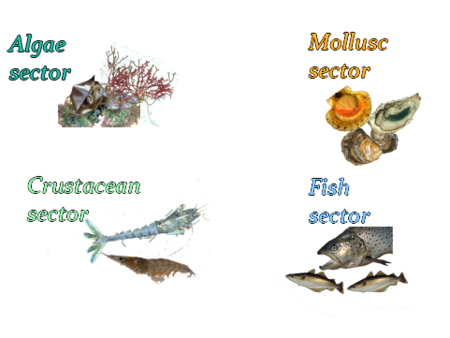Sector Challenges
In France, today, nine salmons out ten and more than one bass out of two consumed are farmed fish. Several other farmed species progressively penetrate the markets.
Objective
The objective of marine fish farming is not to replace fishing, but rather to complement it through its contributions, by enabling the current consumption level to be maintained in view of the world demographic growth. This objective should, however, be continued in full respect of environmental constraints, of consumers’ health, and of bioethics.
Development
Currently, fish farms are preferably set up in sheltered, low populated areas. In order to avoid situations of competitive use, two evolutions pathways are taking shape:
- remote farming in “ off-shore” cages
- inland closed circuit facilities (with water recycling).
Two other intermediate systems are being considered for some species:
- in cage « fattening» or additional growth for young fish caught at sea
- « sea ranching » of juveniles produces in hatcheries and released in open sea for fattening.
In this context, France has a large potential for fish farming development, both because of the geographical and climatological variety of its sites, and of its acknowledged technological know-how, especially due to the fact that its alevins are appreciated on the world market. In 1997, its production reached 6,000 tons and 33 millions alevins.
Quality
As to the quality, farmed fish are easier to control than wild fish. However, fish farm production increase depends on food availability. In the short term, fish flours and oils could remain the key feed, assuming there is a lesser use by the land-based farms such as poultry farms. In the longer term, it could be partly replaced by suitable vegetal feed.

